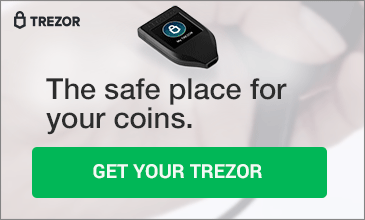What is A Security Token Offering (STO)?
The past two years have seen an impressive amount of capital raised by blockchain-based startups via initial coin offerings (ICOs), though it hasn’t all been smooth sailing. The ICO model, in theory, offers a highly beneficial investment vehicle for both companies and individuals wishing to support a project. Foremost, a company can offer its tokens in exchange for cryptocurrencies without having to sell any equity in the company itself. By extension, investors can participate in projects they support by purchasing the tokens for use within the ecosystems or to generate returns for speculative purposes.

The Problem with Utility Tokens
This model, which has rapidly become a popular fundraising channel for many blockchain-based businesses, produces what are referred to as utility tokens—cryptocurrencies or coins that represent access to a company’s products or services. The key feature of these utility tokens is that they are decidedly not an investment in the actual company itself—users are not entitled to shares of the company or any accompanying shareholder rights.
While utility tokens can prove to be lucrative investment options, they essentially represent the ability to pay for a service that may or may not have already been built. While they may be useful for speculating, these tokens have little long-term value until the company that offered them launches their service (an event that never actually happens for nearly half of all ICOs). At the heart of the problem is the fact that these tokens have no underlying asset to give them value.
More recently, however, a new paradigm for tokens has emerged: the security token.
What are Security Tokens?
Unlike their utility token counterparts, security tokens are tied to real securities, which may represent tokenized assets. In certain cases, these tokens can represent actual equity, acting as “digital shares” of a company. Although not necessarily tied to equity in all cases, security tokens can be used to fractionalize ownership in a variety of assets ranging from real estate to fine art. In effect, they can grant token holder an array of rights. This may mean equity ownership, periodic dividends, cash flows, debt repayments, voting rights and more. All these rights are codified by a smart contract that governs the token.
(Read more: Are STOs the new ICOs?)
More importantly, the nature of these tokens means they are treated very differently from a legal and regulatory perspective. Because they derive their value from actual securities, security tokens are considered investments. This also means additional regulatory and reporting requirements for the issuing entity.
This is a vital distinction, and more so for institutional investors considering it eliminates one of the biggest hurdles utility tokens present. When interested parties invest in an ICO that sells utility tokens, investors have little recourse should the company go under or simply take their money and run. Because they are not technically considered “securities” (although their classification may be changing), companies are not beholden in any way to deliver any value to their token holders. While ICOs present an intriguing fundraising strategy, their lack of regulation along with the functional purpose of utility tokens tilts the balance in favor of companies, making the sector ripe for fraud.
On the other hand, security token issuance generally requires enhanced regulatory oversight. This oversight means better investor protections and more rights for investors, restoring the balance of power from the viewpoint of prospective stakeholders. Additional regulatory responsibilities may include tax reporting, compliance duties, and added transparency. Failure to adhere to securities laws could result in severe penalties should companies fail to honor their reporting obligations.
Why are Security Tokens Important?
While ICOs that offer utility tokens are a terrific development for retail traders and casual crypto enthusiasts, they pose a bigger problem for institutional investors and VCs. The lack of comprehensive regulation across the crypto sector has long been a challenge preventing institutional capital from leaving the sidelines due to the dangers of exposure to this unregulated asset class. The situation is clearly not optimal, but VCs and institutional investors have found ways to continue allocating funds while avoiding many of the pitfalls inherent in the ICO process. For many, this includes allocations at a pre-ICO stage, or signing standard investment agreements with blockchain-based companies for equity in their projects.
Another strategy investors have employed to hedge their exposure to blockchain companies is by signing a Simple Agreement for Future Tokens (SAFT). These SAFTs are deals that entitle accredited investors to purchase tokens once an ecosystem is launched and tokens are applicable to unlock the utility. A SAFT is a safer and more compliant mechanism for VCs seeking to participate in blockchain-based crowdfunding campaigns, but still poses the problem of uncertainty. Since the initial funding is not in exchange for actual tokens, but for the promise of tokens, investors still risk losing their capital should the project never come to fruition.
Security tokens present a logical solution to this problem from a regulatory and risk perspective. For one, they are fully governed by securities regulations, and they place an onus on companies to deliver. For investors, it also provides greater insulation from risk considering these tokens are characterized by financial rights. Unlike SAFTs, security tokens are not future promises, but actual securities in digital form.
Difference Between STO and ICO
In practice, selling security token is comparable to ICOs, though the process is instead termed a security token offering (STO). Much like an initial coin offering, STOs issue coins to investors. However, that is where the similarities mostly end. In an ICO, investors are purchasing tokens to benefit from the possibility of token appreciation or to unlock the ecosystem’s utility. By comparison, STO investors are investing with the expectation of receiving future cash flows, dividends, or voting rights directly tied to the security being issued.
Security tokens are backed by assets, profits, or cash flows, and thus have an intrinsic value from the moment they are issued unlike utility tokens, where value is largely theoretical until an application is developed. Additionally, STOs are intended to be fully compliant with regulatory frameworks, allowing investors from all over the world to participate without violating respective securities laws. This is especially true in countries like the US, which exhibit stricter oversight of securities and investments.
Another key aspect of STOs is that they allow companies to create whitelists and blacklists, a factor that makes it easier to comply with know-your-customer (KYC) and anti-money-laundering (AML) reporting requirements. By operating more transparently, STOs can effectively negate some of the bigger issues facing utility token offerings—a lack of corporate accountability, the possibility of fraud, and no recourse in the event of a company failure.
In a sense, many STOs will look more like IPOs than ICOs. Instead of a “wild west” approach to fundraising, whereby companies are simply aiming to raise as much capital as possible without concern for the source of funds, STOs are subject to strict regulations. However, this clears the way for institutional participation, a factor that may represent a potential tidal wave of capital destined for blockchain-based services.
The Direction Of Security Tokens
Security tokens have already drawn significant interest from more traditional financial services giants and institutions. Established industry players, namely major entities operating in global equity markets are attracted for several reasons, but most important among them is greater fractionalization potential, the ability to implement round-the-clock trading, and instant settlement. For an exchange like Nasdaq or the New York Stock Exchange, it presents the opportunity to list any number of different assets.
Apart from affording liquidity, transparency, and low latency to investors, exchanges can reduce overheads while remaining compliant and meeting all reporting requirements. In addition, the immutability of the blockchain affords security tokens trustless ownership characteristics that reduce the need for the existing custodial model and third-party verification which adds layers of intermediaries and costs to the current security ownership paradigm.
STOs are paving the way for fulfilling many of blockchains earliest objectives, namely greater transparency and immutability. By enabling the tokenization and fractionalization of a range of securities, there is no limit to what may be tokenized. Whether equity, debt, real estate, fine wine and art, classic cars or other assets, the list of tokenizable products is truly endless.
This new avenue for financing is sure to attract the attention of institutional capital thanks to its overwhelming focus on transparent record keeping and regulatory compliance. These two factors alone apart from the rights afforded by security tokens will present the chance to build a brand new financial market that can attract capital from across the globe instantaneously.


